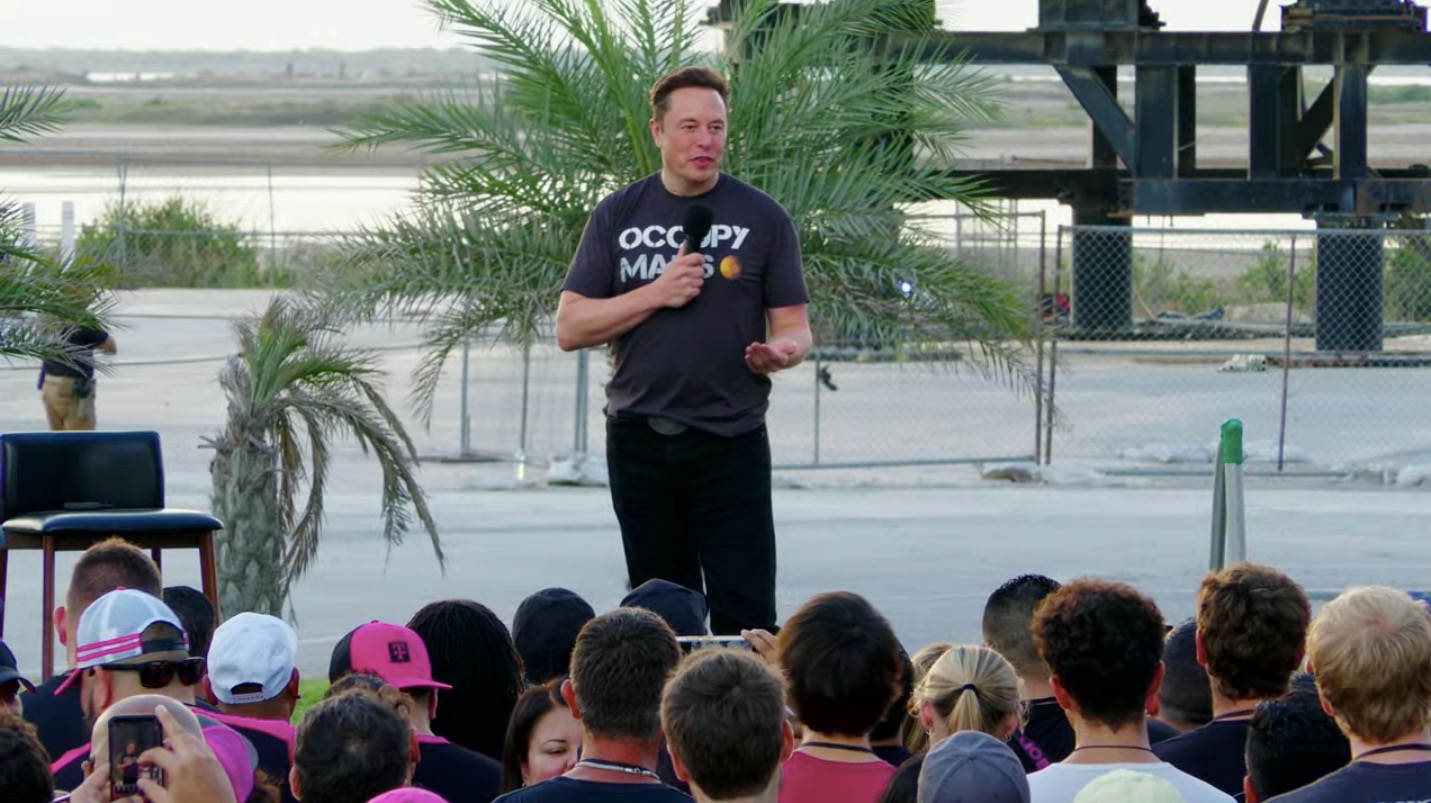
SpaceX's Starlink satellite network will start beaming service straight to smartphones next year, if all goes according to plan.
Elon Musk and T-Mobile president and CEO Mike Sievert announced the plan Thursday night (Aug. 25) during a webcast event at SpaceX's Starbase facility in South Texas. The two companies are teaming up on a project called Coverage Above and Beyond, which aims to provide smartphone connectivity to T-Mobile customers pretty much everywhere.
"I think this is really a massive game changer," Musk said. "In a nutshell, it's no more dead zones."
Related: SpaceX's Starlink megaconstellation launches in photos
The current landscape features plenty of dead zones — remote regions far from cell towers where smartphone users can't get a signal. Indeed, there are about 500,000 square miles (1.3 million square kilometers) in the United States that aren't covered by any cellular network, Sievert said.
Coverage Above and Beyond intends to solve that problem by harnessing Starlink, the broadband megaconstellation that SpaceX is building in low Earth orbit. The company has already launched more than 3,000 Starlink spacecraft to date, but none of the currently operational satellites are up to the newly announced job; Coverage Above and Beyond will require Starlink Version 2, which is expected to debut next year.
Version 2 craft will be 23 feet (7 meters) long and tip the scales at 1.25 tons (1,130 kilograms), compared to about 660 pounds (300 kg) for current Starlink satellites. That's so big that SpaceX will need to launch them on Starship, its giant, next-generation transportation system, rather than its workhorse Falcon 9. (Musk did say, however, that SpaceX may build an interim, Falcon 9-compatible "mini" Version 2 if Starship's development is significantly delayed.)
Get the Space.com Newsletter
Breaking space news, the latest updates on rocket launches, skywatching events and more!
But providing Coverage Above and Beyond is such a tough task that SpaceX will need to juice Version 2 craft even more, outfitting each one with a special antenna about 16.5 feet (5 m) on a side, Musk said.
"They're the most advanced phased-array antennas in the world, we think," Musk said.
"The antennas have to be extremely advanced, because they've got to pick up a very quiet signal from your cellphone," he added. "And you can imagine, that signal's gotta travel 500 miles [800 km] and then be caught by a satellite that's traveling 17,000 miles [27,350 km] an hour. And the satellite's got to compensate for the Doppler effect of moving so fast. So this is really quite a difficult technical challenge. But we have it working in the lab, and we're confident this will work in the field."
If Coverage Above and Beyond works out, T-Mobile customers will be able to access Starlink connectivity with their current phones, via T-Mobile's existing spectrum; they won't need to buy any special new gear, Sievert said. But he and Musk made sure to set expectations at the proper level.
The Starlink coverage is not meant to replace tower service; rather, it's intended to "provide basic coverage to areas that are currently completely dead," Musk said. Coverage Above and Beyond will provide a total of about 2 to 4 megabits per "cell zone," he added, which translates to 1,000 to 2,000 concurrent voice calls, or hundreds of thousands of simultaneous text messages. So it won't be a great option for online gaming or video chatting, at least in the near future.
The vision could grow more ambitious, however. For example, SpaceX would like to spread its Starlink direct-to-handset service beyond the borders of the United States.
"This is an open invitation to carriers around the world," Musk said. "Please get in touch with us, and we'd love to partner with you and enable this globally."
Mike Wall is the author of "Out There" (Grand Central Publishing, 2018; illustrated by Karl Tate), a book about the search for alien life. Follow him on Twitter @michaeldwall. Follow us on Twitter @Spacedotcom or on Facebook.
Join our Space Forums to keep talking space on the latest missions, night sky and more! And if you have a news tip, correction or comment, let us know at: community@space.com.

Michael Wall is a Senior Space Writer with Space.com and joined the team in 2010. He primarily covers exoplanets, spaceflight and military space, but has been known to dabble in the space art beat. His book about the search for alien life, "Out There," was published on Nov. 13, 2018. Before becoming a science writer, Michael worked as a herpetologist and wildlife biologist. He has a Ph.D. in evolutionary biology from the University of Sydney, Australia, a bachelor's degree from the University of Arizona, and a graduate certificate in science writing from the University of California, Santa Cruz. To find out what his latest project is, you can follow Michael on Twitter.









